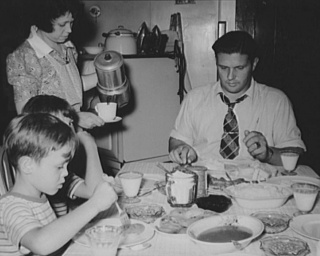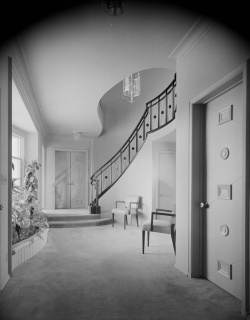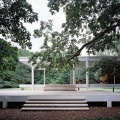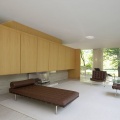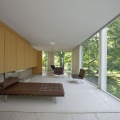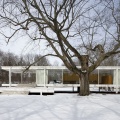Education | Timeline |
- 1829
- 1834
- 1840s
- 1848
- 1853
- 1859
- 1870
- 1870s
- 1871
- 1875
- 1877
- 1879
- 1880s
- 1882
- 1883
- 1884
- 1886
- 1887
- 1889
- 1890s
- 1891
- 1892
- 1893
- 1894
- 1895
- 1898
- 1899
- 1900
- 1900s
- 1901
- 1902
- 1904
- 1905
- 1906
- 1908
- 1909
- 1910
- 1910s
- 1911
- 1912
- 1913
- 1914
- 1915
- 1916
- 1917
- 1918
- 1919
- 1920
- 1920s
- 1921
- 1922
- 1923
- 1924
- 1925
- 1926
- 1927
- 1928
- 1929
- 1930s
- 1930
- 1931
- 1933
- 1934
- 1935
- 1936
- 1937
- 1938
- 1939
- 1940s
- 1940
- 1941
- 1942
- 1943
- 1944
- 1945
- 1946
- 1947
- 1948
- 1949
- 1950s
- 1950
- 1951
- 1952
- 1953
- 1954
- 1955
- 1956
- 1957
- 1958
- 1959
- 1960s
- 1960
- 1961
- 1962
- 1963
- 1964
- 1965
- 1966
- 1967
- 1968
- 1969
- 1970s
- 1970
- 1971
- 1972
- 1973
- 1974
- 1976
- 1979
- 1980
- 1992
The House I Want
Williams' ideas about the ideal home are included in a lecture series sponsored by the Women's Architectural League. The March issue of Architect and Engineer summarizes his views.
"...Interior design as well as exterior appeal, color harmony, rendering, and prompt attention to desires of those contemplating the building of a home...are an important part of today's architectural considerations."
Elizabeth Gordon, editor of House Beautiful, in her 1946 forecast of taste for the next half century calls the study of consumer trends "desire research."
Both Williams and Gordon recognize that the new American consumer, with a growing discretionary income, wants a house design to reflect both their aspirations and an ideal life style.
Designer for Living
Ebony, February 1946
America's ace architect Paul Williams attains fame and fortune blueprinting stately mansions
"In a nation where Negroes live in architectural atrocities of slums and shanties, a Negro has become one of the foremost designers of vast, stately country houses and estates. He is tall, handsome, white-haired Paul Williams, one of America's most successful architects .... Paul Williams does not think as most American Negroes. He believes race prejudice can be conquered by individual achievement, rather than mass pressure."
This Maynard L. Parker photograph of the Lilian residence captures a feature Williams is noted for including in his stately homes and estates. (Huntington Library, San Marino, California)
Farnsworth House, Plano, Illinois
Planning and construction for the Farnsworth House takes six years (1946-1951). Architect Ludwig Mies van der Rohe and owner Dr. Edith B. Farnsworth collaborate on the design and envision the house as a prototype for glass residential buildings. The weekend retreat is designed with an open plan built of glass, steel, concrete and marble. The design and materials blend the International and Modern-styles of architecture. Architectural historians often cite the house as the purist example of Mies van der Rohe's minimalist theory.
The glass-sided, box-like Farnsworth House is the subject of on-going debate in American architectural history. Is it a "glass shell that floats in the air...one of the most uncompromising modern houses in existence" (House Beautiful, February 1952) or an example of "glib, false sophistication." (House Beautiful, April 1953) Once friends and collaborators, the relationship between the owner and architect deteriorates. In a series of magazine articles Dr. Farnsworth describes her country retreat as an unworkable, brutal living space with windows that "...steam up in the winter and drive you crazy. You feel as though you are in a car in the rain with a windshield wiper that doesn't work." Professional architects of the time defend Mies van der Rohe's design as "the most important house completed in the U.S. since Frank Lloyd Wright built his desert home in Arizona." (Architectural Forum, October 1951)




